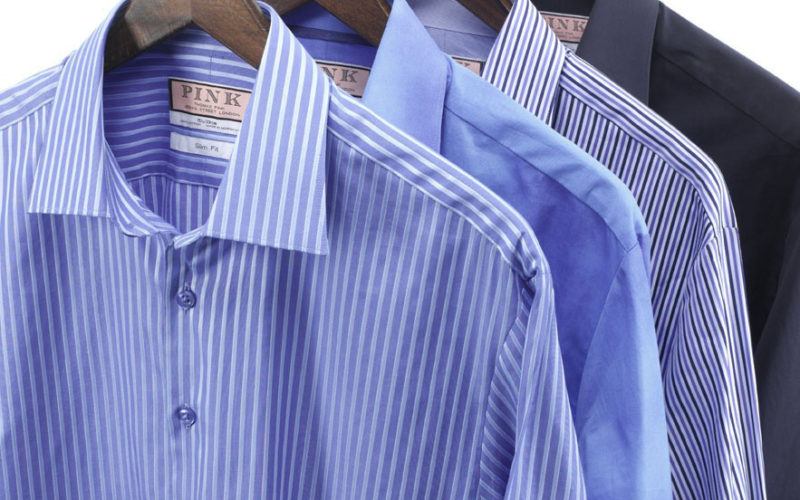Q. I have a few of those shirts with two different patterns. There is the main pattern that you always see, and another one that only shows when you open the top one or two buttons or when you turn back the cuffs on the sleeves. The shirts look good unbuttoned, but they have a problem when buttoned up. When I wear it with a tie, you can see just a bit of the second pattern at the neck. It contrasts and looks poorly designed. Is there a solution I’m missing?
A. Part of the reason you had such a difficult time describing your shirts is that it is hard to know what they are called. Since I didn’t know a name for them, I checked with Brooks Brothers, Mitchell’s, Paul Stuart, and Jos. A. Bank. Every one of them knew what kind of shirt I was talking about, but no one knew a name that identifies it. Online it is occasionally called “contrast cuff,” but my guess is, it does not have a name.
We all agreed that the shirts are made of the same smooth (woven) fabrics as dress shirts (not knits); they are cut like dress shirts, but are not considered to be dress shirts. They are actually considered to be long-sleeved sport shirts, thus, blurring the boundaries between the two, and also between business and social wear.
It is likely that you can see a bit of the second pattern under the collar when you’re wearing a tie because the shirt is too big. It does not fit you perfectly, because it is not sized the same way as your dress shirts. Sport shirts normally come in small, medium, large, and extra-large, while dress shirts are sized more accurately in exact collar sizes and sleeve lengths, such as 15 ½, 34”. These contrast shirts are usually found in a different part of a clothing store’s “men’s furnishings” department . . . in the sport shirt section, instead of the dress shirt section.
The fact is that these two-pattern shirts are not meant to be worn with a tie. They are designed to be worn open-at-the-neck and also with the sleeve’s cuff turned back, thus, exposing the color-coordinated and contrasting secondary pattern. The interior pattern inside the neckband and inside the cuffs adds a note of casual cool. Yes, you can ask why they and other casual shirts have a top button if it is never meant to be used, but that’s another subject for another day. And so is how to wear a sleeve with only one fold back (having a Hollywood wardrobe assistant helps with that).
These shirts add more style choices for the business-casual man. They can be worn with or without a jacket. Of course, they tend to take on the air of a dress shirt when worn with a suit, blazer, or sports coat. They more clearly become sport shirts when paired with dress slacks, khakis, or jeans, and especially when worn without a jacket. These days, when so many men are going tie-less, I rather like this shirt style worn with a not-too-dressy suit or blazer, because it helps satisfy the need for something a bit different and distinctive near the face. As my regular readers know, I have trouble understanding why so many men willingly give up such an easy way to set themselves apart from the crowd as they do when they forgo wearing a good-looking necktie. These shirts help provide a touch of individuality/personality to a man’s wardrobe.
Besides going on a hunting and shopping expedition to several men’s shops, one place to find some of these designs is in the Jos. A. Bank “Reserve Collection.” But even these do not show up very clearly on the company’s web site. Quite a few shirt manufacturers make them, but two companies that are best known for this style are Eton and Robert Graham. You can see several of their upscale styles by Googling “Robert Graham mixed fabric shirts.”
Here’s an important note of caution: Avoid wearing the two-pattern shirts with a striped suit or a sports coat that has a noticeable pattern. Despite what you may see in some of the current men’s fashion magazines and newspaper supplements, combining three patterns in an outfit is almost never a wise choice. The number of men who can do this well is so miniscule (even including the professional stylists who make these decisions for the publications they work for) that the chances of your doing so successfully is not worth the effort. Stay with a suit jacket, blazer, or sports coat in a solid color that mixes nicely with your shirt. Then, listen for the compliments.









